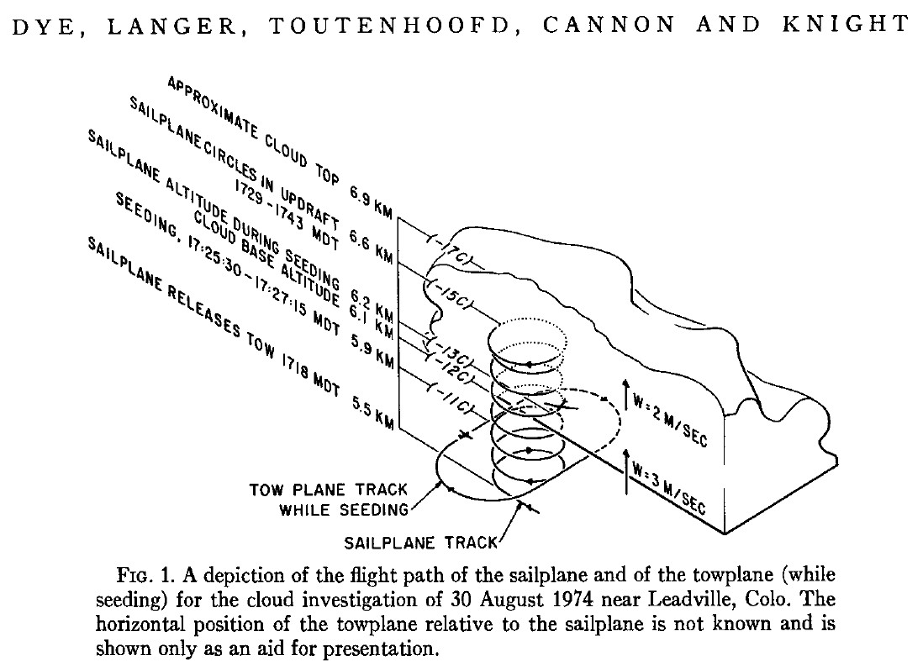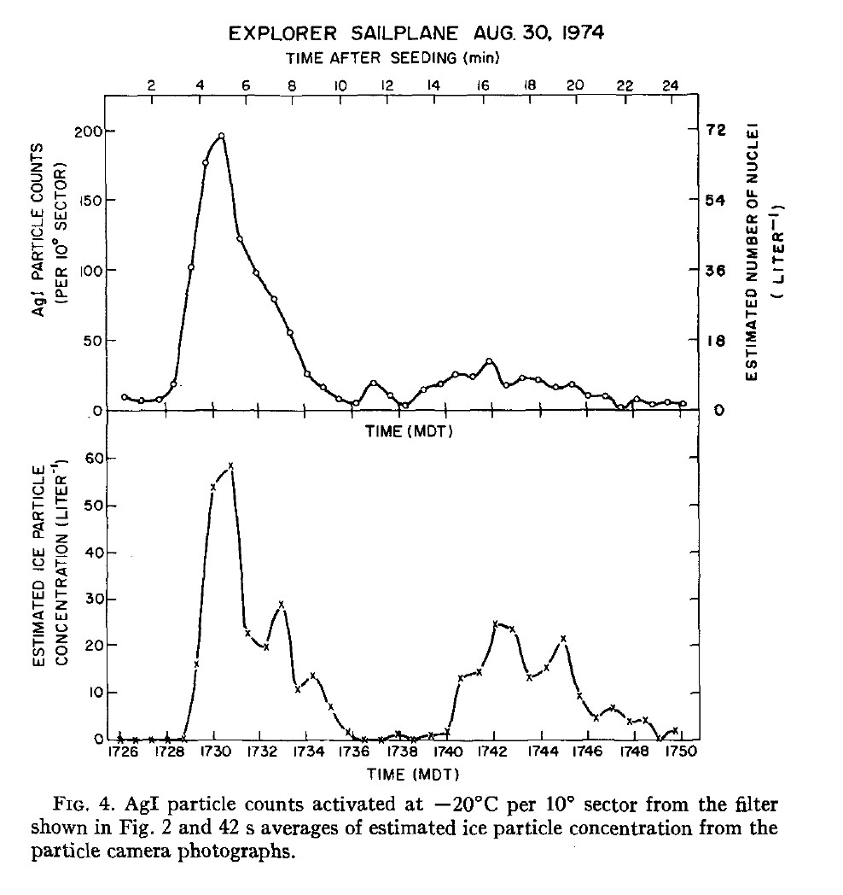One goal of the sailplane program in NHRE was to determine the microphysical effects of seeding with silver iodide (AgI) in large clouds. Although a couple of earlier field studies had made measurements in seeded clouds, at the time of the sailplane experiments there had been no simultaneous measurements of both AgI particles and ice particles in cloud to distinguish between natural ice and ice formed from seeding. (See Dye et al., 1976 for more explanation.) As part of a collaboration with Profs. Lew Grant and Bill Cotton and students at Colorado State University the microphysical characteristics of mountain cumuli, cumuli forming over the mountains of Colorado were investigated with Explorer. The sailplane operated out of the Lake County Airport in Leadville Colorado (elevation 10,000 ft) to investigate cumuli over South Park Colorado and the effects of AgI seeding in these clouds. Prof. Nori Fukuta of the University of Denver also participated in the 1974 experiments using an organic seeding agent as a possible cloud seeding agent, but the organic seeding agent did not prove to be effective at producing enhanced ice particle concentrations.
The most successful flight, August 30, 1974, is depicted in Fig. 24 below. The sailplane spiraled from 5.5 km to 6.6 km (-15 C) and then because the sink rate of the sailplane of 1.5 to 2 m s-1 was about the same as the updraft in the cloud, the sailplane was able to spiral in the cloud at that level for about 14 min. About 1 min after the sailplane entered cloud the towplane flown by Dave Younkin flying below the cloud at 5.9 km (-11 C) burned 3 AgI flares sequentially in the updraft in a racetrack pattern. The flares were the same ones being used by NHRE for the randomized seeding experiment. The schematic of the flight path of both the sailplane and the towplane is shown schematically in Fig. 24.
Fig. 24. A duplication of Fig. 1 from Dye et al., 1976.
One of the instruments added to Explorer for these investigations was a rotating membrane filter with a 12-degree wedge shaped air intake and outlet orifice designed by Gerhard Langer of NCAR. Total rotation of 345 degrees in 24 min gave a point exposure on the filter of 50 s. Fig. 25 presents the time resolved measurements in-cloud of both the estimated ice particle concentrations from the Cloud Particle Camera and the AgI particle counts per 10-degree sector determined from the processed rotating membrane filter. The correlation between the two measurements is readily apparent, demonstrating the effect of AgI seeding on ice particle production. All four photographs in the last row of Fig. 18 are images of particles from this seeded cloud. See Dye et al., 1976 for additional details and results.
Fig. 25. A copy of the original Fig. 4 from Dye et al., 1976.
- Explorer Participation in the National Hail Research Experiment (NHRE)
- Precipitation Formation via the Ice Process in NE Colorado
- The Discovery by Explorer of Adiabatic Ascent in Clouds of the High Plains
- Discovery of Penetrative Downdrafts
- Observation of a Counter Rotating Vortex Pair in a Cumulonimbus
- Explorer Observations of Silver Iodide Seeding in Cumulus Clouds
- Studies of Initial Cloud Electrification with Explorer
- Electrical/Microphysical Measurements in New Mexico
- Measurements on Explorer of Particle Charge, Size and Shape
- Flight in New Mexico to 40,200 ft with Particle Image and Charge Measurements
- Results from CaPE in Florida in 1991

